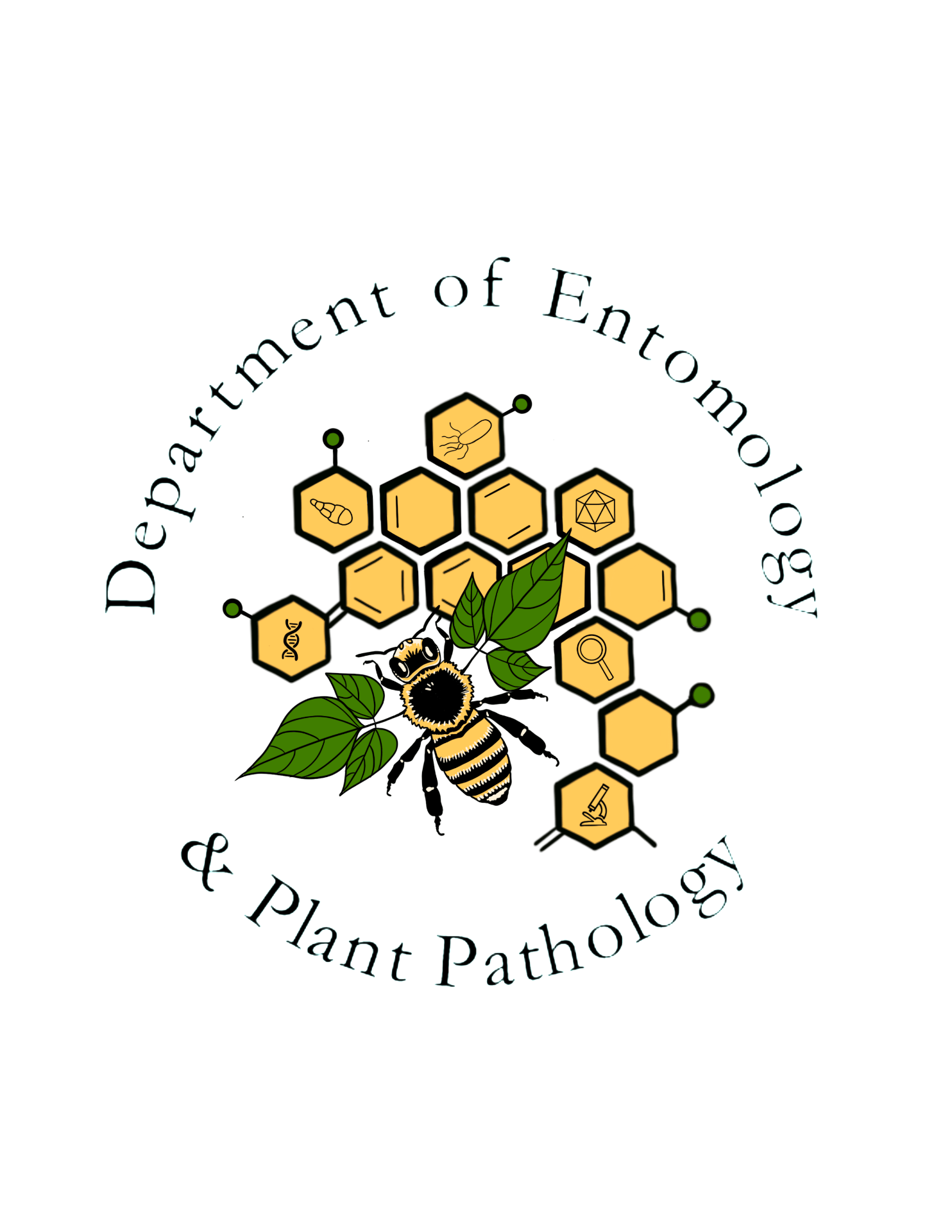Elm sawfly
Order: Hymenoptera
Family: Cimbicidae
Genus and species: Cimbex americana Leach

The mature elm sawfly larva is a striking 2 ¼ inch animal that looks like a big, yellow caterpillar with a black stripe down its back. However, it is not even closely related to true caterpillars. Sawfly larvae have more than the five pairs of stubby abdominal limbs (prologs) typical of most true caterpillars, the prologs lack the hook-like crochets found on caterpillar prolegs, and sawfly larvae usually have only one simple eye on each side of the head as opposed to the six eyes typically found in caterpillars. Caterpillars mature to become butterflies and moths. Sawfly larvae produce wasp-like insects. However, both elm sawfly larvae and some true caterpillars feed in the open on foliage. Elm sawfly larvae cause sporadic defoliation of elms and willows, especially in urban settings. They are also known to feed on the foliage of several other tree species. Adult elm sawflies also cause damage by cutting gashes in the bark of small limbs with their mandibles in order to feed on tree sap, sometimes resulting in girdling and death of the limbs. The species is native to North America and is found from Newfoundland to Florida, westward to northern Texas, and northward to British Columbia, the Yukon, and Alaska. In Arkansas, it occurs mostly in the northwestern part of the state. There is only one generation per year. Adults appear in early May to mid-June, depending on the latitude. After mating, females cut slits in the undersurfaces of leaves where they deposit eggs. Larvae hatch in 7–10 days and feed on foliage until late summer or early autumn. Mature larvae drop to the ground and search for pupation sites among the debris at the base of the host tree, where they spin cocoons and overwinter as prepupae (non-feeding larvae). Pupation usually takes place the following spring, although some prepupae pass the second winter before pupating. Adults emerge about two weeks after pupation.
